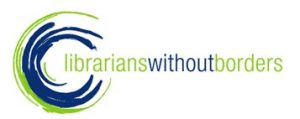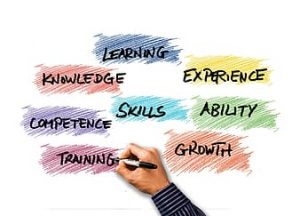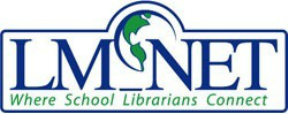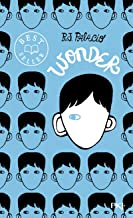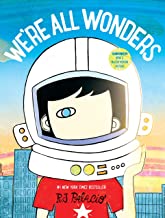Let’s set the stage:
For the first part of my career, I was a high school English teacher, mostly grade 10 and 11. At first it was easy to have a “no cell phone” policy but it kept getting harder and I felt like I was wasting too much energy policing cell phones use. I actually had a conversation with a neighbour the other day who told me she was a high school English teacher and ended up retiring because of cell phones, pretty sad! Cell phone use isn’t what encouraged me to change my career path; however, in my last couple of years teaching high school, I changed me approach. Instead of having an overarching “no cell phones” use, when the class began I told them that part of having a cell phone and being successful in the world is knowing how to use a cell phone responsibly. In English class for me it meant, not using it when I was talking, only using it for things such as online dictionary/thesaurus and possibly using it once the classroom work was complete. Maybe it was all in my head, but I felt like once I set out these parameters, students were actually more respectful and I didn’t have as many issues. My last year in high school was 2014, so I’m sure a lot has changed and there are many productive ways to incorporate cell phone use in the English classroom.
In my current situation, I am a TL at a K-5 elementary school so students don’t really bring their own devices. For most classes, the biggest issue is reminding students about safe handling of devices so they don’t damage them. At my school, we dismantled the computer lab last year and replaced it with two class sets of laptops on carts. When I began as the TL, I advocated for trying to slowly accumulate iPads, getting about 5 new ones a year, but it does seem like technology is changing so rapidly that the ones we purchased when I started (three years ago) seem old. In addition, our district has a fairly strict policy for iPad use and taken on downloading all the apps so the school cannot download our own; if we want particular apps, we have to ask our IT department and it is often a painful wait for the request to go through. Up until now, these are the only devices we use at our school.
The concepts of World Libraries and mobile devices in libraries are a bit out of my comfort zone. I kept adding to my post with ideas I was finding, some which that did not “pan out” but I got some ideas from; therefore, this post is more “stream of consciousness” as I worked through it.
Libraries in Developing Nations:
To begin, I think that for libraries in developing nations to rely on weeded book from developed nations is really unfair. The books are weeded because they are out-of-date, damaged or unpopular so that doesn’t change if they are given to another library. Students in developing countries have enough educational challenges without being given out-of-date reading materials but to be honest, I did not know ways that developing nations obtain books or the best ways for books to be delivered to libraries in developing nations.
The American Library Association has a list of organizations that ship new books to developing countries. It is interesting that at the top of this page it basically says exactly what I say above about out-dated, damaged books.
There is a more global list from UNESCO with contacts for donation agencies for books and computers.
Maybe I wasn’t using the correct wording but I only found one Canadian agency: Canadian Organization for Development through Education (CODE). CODE appears to really only accept monetary donations, not donations of books themselves because they use the money for more than just books; it is also used for providing aspects such as educator training. There are opportunities for schools to fund raise and that might be a good organization to highlight one year at my school. What seems good about CODE is they advocate for getting books to developing nations, seems like mostly Africa, that are “culturally relevant” and “…stack library and school shelves with colorful and engaging children’s books that are appropriate for different reading levels, written in languages that children understand, and that reflect their local realities”(CODE, Literacy Programs).
Librarians Without Borders (LWB) seems like a really interesting library project in developing nations based out of Canada.
It appears that they sponsor two programs at the moment, one in Guatemala and one in Ghana. In reading about the program in Guatemala, it speaks to the fact that they collaborate with local agencies. The site states that, “The focus of this collaboration is on development and operation of a school and community library” (LWB, About, Guatemala Program). This organization helps to set up training for a Librarian position, implement a lending system, and instruction for information literacy. To obtain books for the libraries, books are bought through donations and it says they will “…selectively accept donations of new or gently used Spanish language books in at-need genres and reading levels”(LWB, Programs, Support). There wasn’t anything I could find that discussed the use of a digital library or mobile devices; however, librarians can volunteer to travel to one of the areas to visit and help with these programs! Maybe one year….
Mobile devices in libraries:
The article from our course suggested reading list under “Mobile Learning Resources”, “Turning on Mobile Learning:Global Themes” was very informative and contained a lot of interesting information pertaining to mobile uses in education in both developing and developed countries. I knew that mobile phones are more readily accessible in Africa than most of us think only because I had family members travel to Africa a few years ago. A fact from the article that surprised me was, “Currently, over 70% of mobile subscriptions worldwide come from the developing world, and thanks to rapidly declining prices, powerful mobile handsets previously available only to wealthy individuals are increasingly within reach of the poor” (6). In addition, ““Access to robust mobile networks is nearly universal: 90% of the world‘s population and an impressive 80% of the population living in rural areas are blanketed by a mobile network. This means that learners who might not have access to high–quality education or even schools often do have working mobile phones”(6) . The article advocates for the use of mobile phones in education in all nations as ““…several countries and companies have recently made a push to develop high–digital quality resources and educational materials optimized for mobile devices” (7). I obviously found this article interesting and helpful and don’t want to quote the entire thing but it makes a lot of sense that globally, mobile networks are more accessible worldwide that we think. This article was also written in 2012 so I would assume that the access and use of mobile devices and networks are more prevalent worldwide now.
In my search for how to develop global libraries, it seems like for many, the answer to getting current literature into the hands of students in developing countries is through digital means. Although I did not find as much back-up information for the organization in the following video, I feel like it encompasses many of the ideas that I was finding for other organizations in support of digital libraries.
As the video explains, it is a catalog of e-books that can be accessed through any digital device. It says it is a non-profit organization based out of Australia that sets up the digital catalog and delivers devices to students in developing countries. I tried to look up the Library for All website,libraryforall.org , but my computer told me it was an unsafe connection because the site’s security code had just expired. I could, however, connect to the Facebook page. There is a mobile app available that I downloaded on my phone but I had trouble actually accessing the e-books.
This reminded me about all of the other companies that offer a catalog of e-books such as, Epic: Kids’Books, Audio Books, Videos & eBooks, which I could also download an app for. I wonder if these are available worldwide? I was thinking they probably are.
Where do I go from here?
So I’m not opposed to mobile devices in libraries, but like other ICT, students still need to be taught digital citizenship and media literacy skills in conjunction with use no matter the country.
In my current situation, one thing I am wondering is the feasibility of asking for donations of old cell phone that families may have hanging around home once they get an upgrade from the cell phone company. I know that cell phones still have Wi-Fi capabilities even when disconnected from phone services. That means that cell phones can still be used to access the internet for research purposes, download apps and take pictures and videos. In addition, because they are no longer connected to phone services, it would avoid safety issues connected with text messages and phone calls. I wonder if anyone has tried to do this yet? I have a feeling there might be similar issues through our district as with iPads which I would need to check into.
Finally, it has always been in the back of my mind to look for ways that I can support global libraries; book donations have come up at my TL meetings in the past but nobody really had any suggestions. This assignment was good for giving me an opportunity to look into how I, my school and students can make a difference globally.
References:
Literacy Programs | CODE. (2020). Retrieved 5 August 2020, from https://code.ngo/approach/literacy-programs/
IntoConnection. (2015). Getting Kids To Read in Developing Countries With E-books [Video]. Retrieved from https://www.youtube.com/watch?v=3jWECWnGgTw
Librarians Without Borders. (2020). Retrieved 4 August 2020, from http://lwb-online.org/
Pikist. (2020). mobile phone, smartphone, hand, particles, wave, color, colorful, lines, pattern, abstract, design [Image]. Retrieved from https://www.pikist.com/free-photo-sqefd
West, M. (2012). Turning on mobile learning: global themes. UNESCO Working Paper Series On Mobile Learning. Retrieved from https://unesdoc.unesco.org/ark:/48223/pf0000216451

